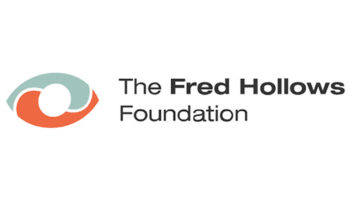Join a powerful, unprecedented alliance for better eye health for all.
Join IAPBCauses of Vision Loss
Glaucoma
Cause data is not available for people with mild vision impairment.
Also, there is limited information on the causes of vision impairment and blindness for people under 50 years of age.More standardisation and certainty of the causes of vision impairment and blindness would be beneficial in future research.
Glaucoma: Global summary from the VLEG study
Glaucoma was ranked as the second leading cause of blindness in adults aged 50 years and over and fourth leading cause of moderate to severe vision impairment. This makes glaucoma the most common cause of irreversible blindness, and the second most common of irreversible moderate to severe vision impairment in adults aged 50 years and over.
However, the prevalence of glaucoma is likely underestimated. For example, glaucoma usually does not get detected in eyes with dense cataract. Surveys also usually do not report conditions with potential for later vision loss, such as early glaucoma. They report data for the better seeing eye, overlooking individuals with monocular problems. This greatly underestimates the magnitude of eye conditions and the service needs. The Lancet Global Health Commission on Global Eye Health (2021) states that it is clear that most people with glaucoma are not included in these estimates, as their central visual acuity is preserved.
Once detected, therapy of glaucoma can prevent glaucoma-related vision loss in most cases. This means that every person that experiences vision impairment and blindness from glaucoma, there are many more living with early-stage glaucoma who need comprehensive and integrated people centred eye care services to prevent vision loss.
It is critical that we improve systems of surveillance and effectiveness of care to prevent vision loss from glaucoma.
Reference
Adelson, J., Bourne, R., Briant, P., Flaxman, S., Taylor, H., Jonas, J., Abdoli, A., Abrha, W., Abualhasan, A., Abu-Gharbieh, E. and Adal, T. (2020). Causes of blindness and vision impairment in 2020 and trends over 30 years, and prevalence of avoidable blindness in relation to VISION 2020: the Right to Sight: an analysis for the Global Burden of Disease Study. Lancet Global Health.








